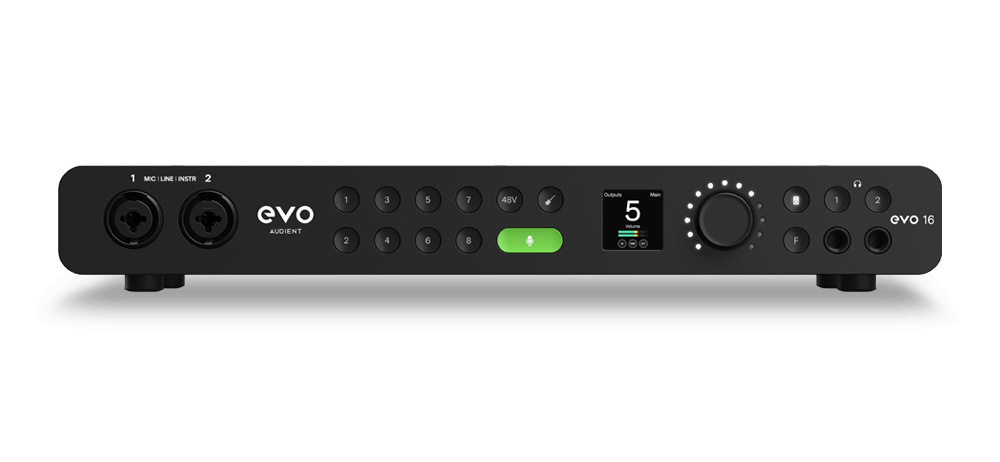Dirty Connections
Dirty audio-cable connections can attenuate signal levels (most notably in the upper frequencies) and induce RF noise into the audio path. When the conductive surface of one pin (2 or 3) of an XLR connector or conductive surface (Tip or Ring) of a TRS connector is coated with an invisible contaminate like oil from fingers, a discrepancy in resistance may arise between the pair of signal conductors and thus allow RF noise to enter the audio path. In order for a balanced audio cable to function properly and reject noise from external sources, both signal conductors must be electrically (in terms of conductivity, resistance and so forth) balanced.

The best way to mitigate potential RF noise and ensure that you are not losing any signal level at any frequency is to first never touch the conductive surfaces of your audio-cable connectors. Next, as a matter of periodic maintenance or to properly clean a potentially soiled connector, use a contact enhancer spray like DeoxIT from CAIG and follow the directions on the label. Pro tip: You may find improved results with especially dirty connections by thoroughly coating the pins of a male XLR connector or male TS/TRS connector with DeoxIT and inserting into the female connector before evaporation occurs. Repeating this step several times may be necessary to remove contaminants from the contact points inside the female connector.
Balanced & Unbalanced Connections
The difference between the two types of 6.8mm (or 1/4” as noted in the US) connectors is worth highlighting as it pertains to the broader topic. Many aspiring engineers give little regard to whether or not the cables are (TRS) balanced or (TS) unbalanced. After all, the distinction on the male type is subtle and unless you read manuals or schematics, the only way to know if the female type is balanced or unbalanced is to take the component apart to examine the pin wiring.

I have heard countless people tell me, “It doesn’t matter. You use the balanced type if it’s a long cable run and unbalanced if it’s a shorter run.” Of course, “long” and “shorter” are subjective terms. Unfortunately, it’s not that simple at all.
While it’s possible to arbitrarily use TS and TRS cables between some components, with no apparent consequences, in many cases using the wrong type of connector will result in a 50% reduction in signal level. In addition, using the wrong connector type for the component may result in some audible distortion and potential damage to components in a circuit.
For example, one of my clients ran an XLR-to-TS cable from an outboard mic preamp into the line/instrument input of her audio interface. She could not record anything hotter than about -30 DBFS with the preamp gain set very high and the recorded signal was quite distorted. Once she switched to an XLR-to-TRS cable, the signal level coming into the DAW was much stronger and free from distortion.
In another example, I disregarded my own advice and used a TRS cable to connect my Moog synth to my Audient iD44. The input signal level in the DAW was surprisingly low even with the output volume of the Moog at maximum. The audio signal wasn’t distorted but it was too quiet to be usable and boosting it after the fact in the DAW would not sound good at all. Then I realized what I had done and switched the cable to a TS type. At the same volume position on the Moog, the signal was coming into the DAW at about unity.
So, if you understand what you are doing with gain staging outside the computer and your signal seems too quiet, it may not be a bad cable but rather the wrong cable. Again, the wrong cable may work between some component combinations and not others because of how each circuit designer opted to configure the component jack. So when in doubt, check the manuals.

Impedance Optimization
This is an interesting topic not often considered. In most cases where input and output impedances are each within a common range, it’s not an issue. Uncommon impedances most commonly create mismatches that result in signal loss when integrating vintage or esoteric, boutique gear into more conventional setups.
High-impedance or Hi-Z is a term often seen associated with instrument-level (guitar or bass guitar) tools. A guitar or bass with passive pickups outputs a Hi-Z (10k-15k Ohm) signal which allows for dynamic voltage swings but lacks the current to drive cables longer than 6-10m (about 20-30ft) without notable signal degradation. It’s important to send the guitar signal into a device that is designed for a Hi-Z load or the signal will not be amplified well or at all.
Microphones have much lower output impedances than guitars. The difference is that mic signals generally offer higher current potential and a balanced signal that can (if the cable is of good quality) cancel noise from external sources of EMI/RFI. Therefore, a mic signal can be sent through much longer lengths of cable without any notable degradation.
When pairing mics with preamps, try to keep the output impedance of the mic in a 1:4 or 1:5 ratio relative to the preamp. Most mic preamps have an input impedance of 1200-1400 Ohms but some are 600 Ohms. Most mics output 200-350 Ohms but some as high as 600 Ohms and as low as 50 Ohms.
What happens if you send a signal from a mic with a 600-Ohm output into a vintage-style preamp with a 600-Ohm input? This 1:1 ratio will result in a 50% loss in voltage or a 6 dB reduction in signal level. So if you have a mic with an output of over 300 Ohms, you would do well to use a preamp with a conventional input impedance to avoid signal loss.
If you have passive ribbon mics (which have notoriously low output impedances and require 60dB of gain or more) or some other low-output dynamics like the SM7b, you would do well to consider the CL-Z from Cloud Microphones. The CL-Z offers up to 26dB of gain to boost mic signals before reaching the preamp and a variable Z control to optimize (or intentionally mismatch) the mic impedance for the preamp. Just remember that the CL-Z is designed for ribbons and other dynamic mics. It can be used with a tube (valve) condenser as such a mic does not require +48VDC (phantom power) from a preamp. All other condensers or any other active dynamic mics cannot be used successfully with the CL-Z unless you get creative with an external phantom power supply.

USB Noise
This issue often baffles some experienced engineers and producers. I have only experienced it in situations when the audio interface and other USB peripherals were connected to a laptop via an unpowered USB hub. When the computer cannot handle the power demand of all the USB devices, the result is clicking, popping and RF noise in the monitors or headphones, often when no audio files are in playback. Even a small, bus-powered USB keyboard controller or SSD can cause this issue.
So, if other USB peripherals must be connected to the laptop via USB hub during tracking or mixing and you experience noise along the lines of what I described above, your best bet is to try a powered USB hub instead. This often resolves the issue.

About the author
Stefan Konstantopoulos is a Nashville-based music producer, remote production consultant, mentor, and gear reviewer. Trained as an audio engineer, he is experienced in producing demos and commercial releases including music for sync.
Our Products
-

Interfaz de audio 2 entradas | 2 salidas
-

Interfaz de audio 10 entradas | 6 salidas
-

10in | 14out Audio Interface
-

Interfaz de audio 20 entradas | 24 salidas
-

24in | 32out Audio Interface
-

Interfaz de audio 10 entradas | 14 salidas
-

Interfaz de audio 10 entradas | 4 salidas
-

Interfaz de audio 2 entradas | 2 salidas
-

Interfaz de audio 4 entradas | 4 salidas
-

24in | 24out Audio Interface
-

Todo lo que necesitas para empezar a grabar
-

8 Channel Smart Preamp with AD/DA
-

Previo de micro y ADC de 8 canales
-

Previo de micro y control de tono de 8 canales
-

Consola de grabación analógica modular
-

Small Format Analogue Recording Console
-

Small Format Analogue Recording Console
-

Immersive Audio Interface and Monitor Controller
-

Controlador de sobremesa para monitores
-

Controlador de monitores de sonido surround



